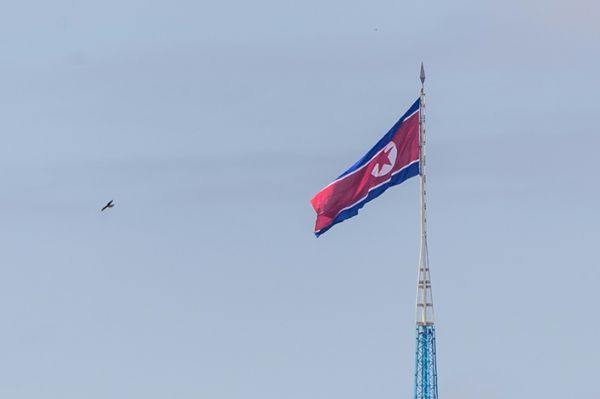
The head of the environmental regulator has slammed the operators of Australia’s largest goldmine for “completely unacceptable” levels of air pollution after testing revealed it was emitting more than 11 times the legal limit of dust containing heavy metals.
The New South Wales Environment Protection Authority on Wednesday ordered the operators of the Newcrest Cadia Hill goldmine, near Orange, to take immediate action to reduce air pollution to within legal limits or face the consequences – which could include the suspension of its mining licence.
The company provided preliminary air pollution test results to the EPA on 6 June after the regulator issued a prevention notice over its management of “emissions of dust and other pollutants”.
That report found that the mine’s main vent, VR8, also known as the “crusher vent” because it extracts contaminated air from where the ore is crushed deep underground, was expelling between 200 and 570 milligrams per cubic metre of dust – more than 11 times the regulatory limit for air pollution.
This is despite a new ventilation system that included installing a bag house which catches 1 tonne of dust an hour.
The EPA chief executive officer, Tony Chappel, told Guardian Australia on Thursday that the level of pollution recorded in those test results was “completely unacceptable” and that the mine had fallen well short of its legal obligations to meet clean air standards.
“The clean air regulation states that for any point source of pollution, which that vent is, the maximum allowable standard of dust is 50 milligrams per cubic metre,” he said. “That’s the standard we’re talking about when we say they have to immediately comply.”
The results only relate to the quantity of dust. A full chemical analysis, which will detail the makeup of the dust, will take a further 28 days.
Chappel said if Newcrest could not show its subsidiary, Cadia Holdings Pty Ltd, was taking immediate action to comply, the EPA would take appropriate action such as suspension of the mine’s licence, seeking court orders or issuing further directions.
“We know this is strong action, but we will not shy away from doing what we must to prioritise human health and the environment,” he said.
It follows complaints from local residents of dust plumes blown from the direction of the mine that settle in their gutters, vegetable gardens and even inside their homes.
Dozens of local residents, including children, have also reported blood tests with high levels of selenium, nickel and copper. An estimated 1,000 people who live within a 15km radius of the mine and rely on rainwater for drinking could have heavy metals in their water supply. There is no confirmation that the contamination came from dust from the mine.
It is not the first time the EPA has taken regulatory action against the mine over air pollution. In 2022 it issued two fines: in March the company was fined $15,000 for failing to conduct continuous air quality monitoring in 2020 and 2021, and in August it was fined another $15,000 for dust pollution.
An earlier independent air quality audit in 2022 found vents from the Cadia goldmine were exceeding regulatory limits, with the VR8 in particular emitting dust at seven times the regulatory limit.
In response to the audit’s findings, Cadia installed one bag house at VR8, which Chappel said was part of the mitigation measures the EPA worked on with the mine to reduce its dust emissions. The level of pollution increased between the 2022 testing and that conducted in May 2023, from 360mg/m3 to 570mg/m3.
Chappel said the EPA had directed Cadia to conduct the dust sampling of VR8 because it wanted to “understand to what extent had that intervention addressed the issue”.
“The results showed that, very clearly, it had not had a major effect and that’s why we’ve acted now to require immediate compliance,” he said.
Chappel also said that the report was based on averaging a number of samples, and he was “concerned that if anything is underestimating, not overestimating the dust”.
A spokesperson for Newcrest said the company had put in place interim measures to ensure it complied with the licence variation notice issued by the EPA in May.
They said there was “no impact to production”.
“We continue to focus on the implementation of dust mitigation equipment throughout our underground operation,” they said.
“We remain committed to meeting all our statutory obligations in a way that is aligned with our values and will continue to work cooperatively with the EPA.”
Chappel said he had a “constructive conversation” with the Newcrest CEO on Wednesday and was “quite hopeful [the company] will act this week” to address the EPA’s concerns.
But he said the mitigation measures would only change the outcome if they result in a reduction in pollution.
“They have an obligation, they’ve always had this obligation, and they must meet it,” he said. “And if they’re not able to meet it, then we can’t have mines operating that are dramatically exceeding their obligations.”
He added: “The onus is now on mine, to immediately demonstrate compliance. And then we’ll have more to say, once we see what that looks like.”







